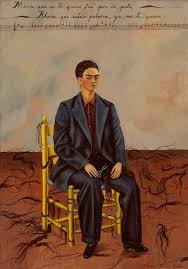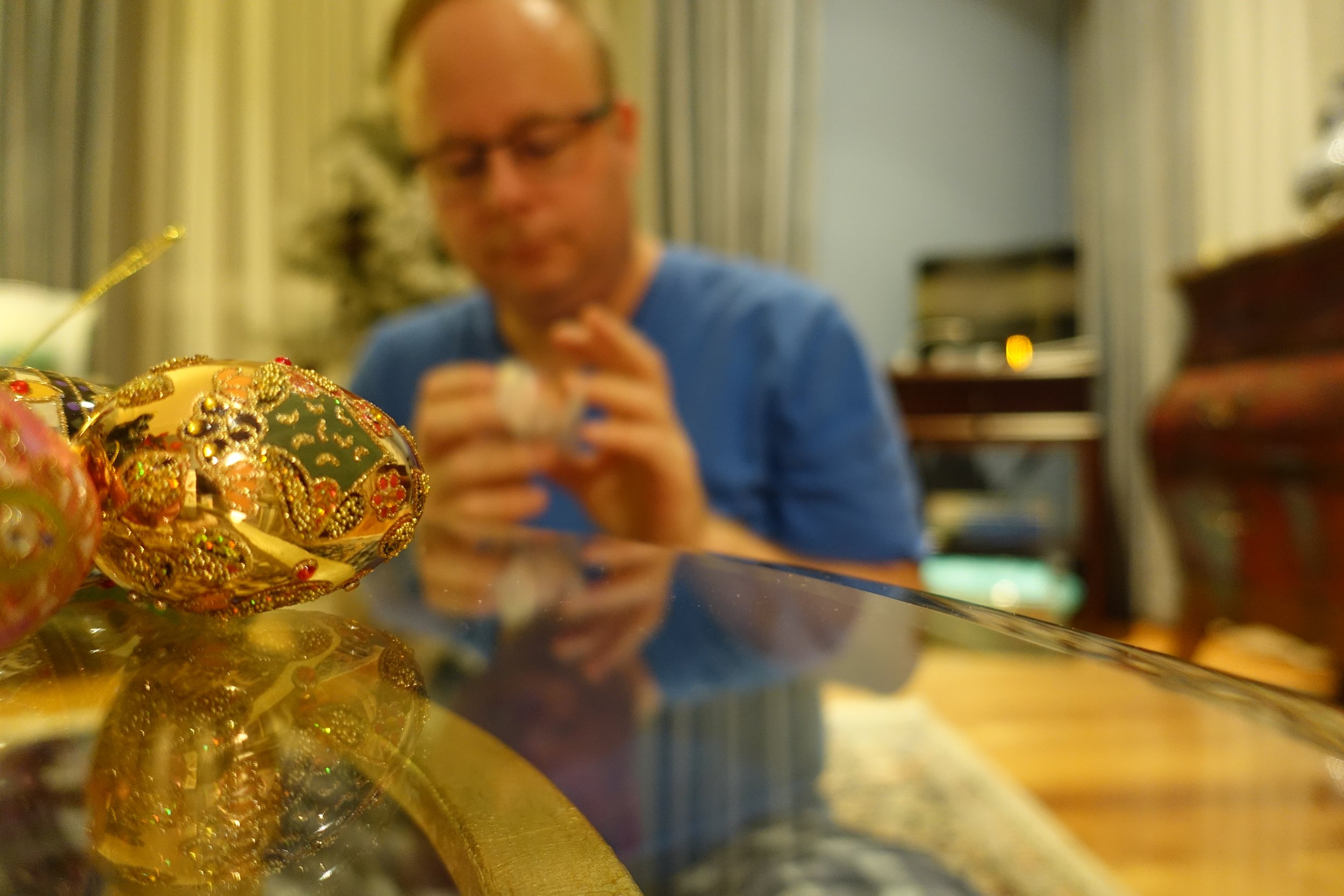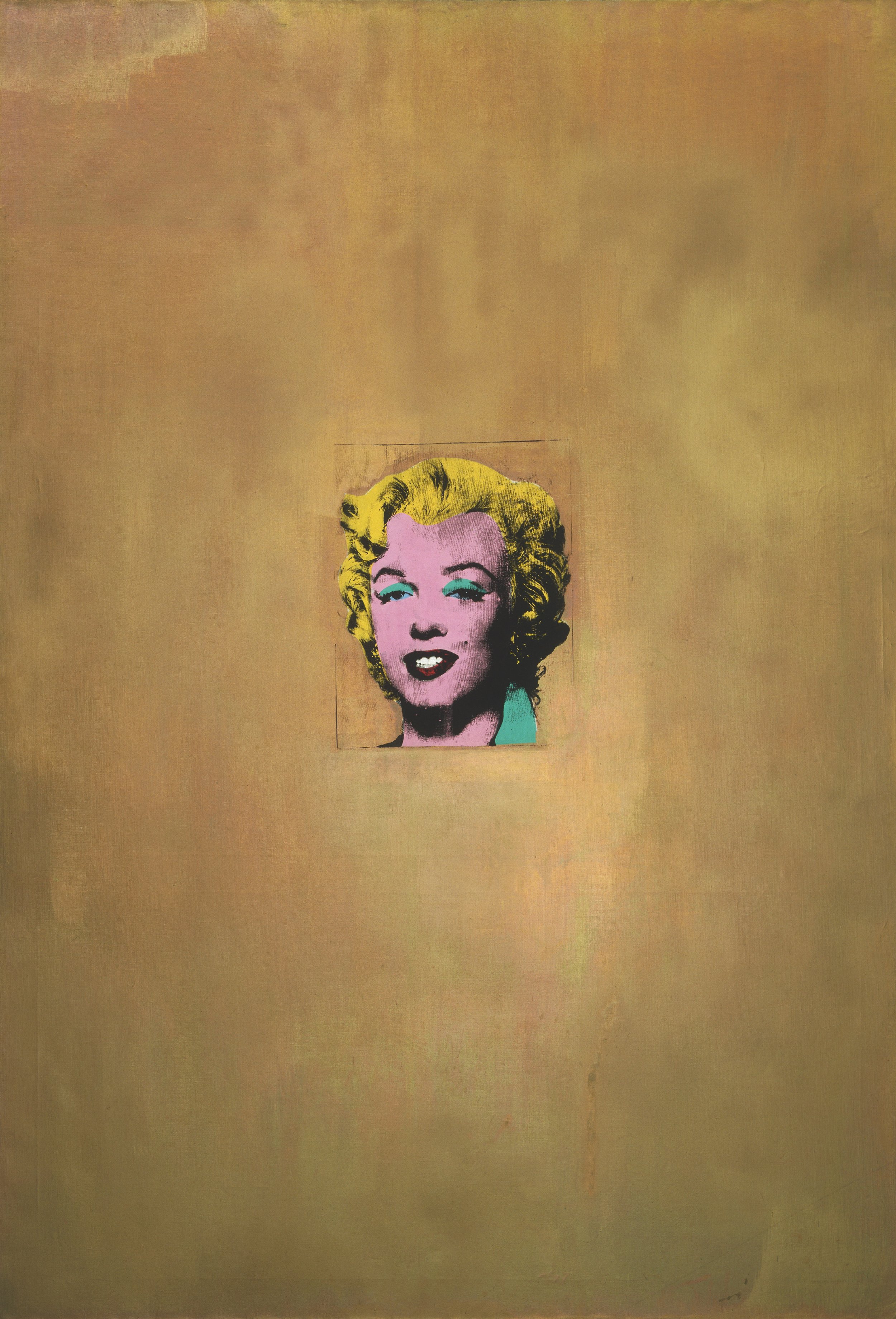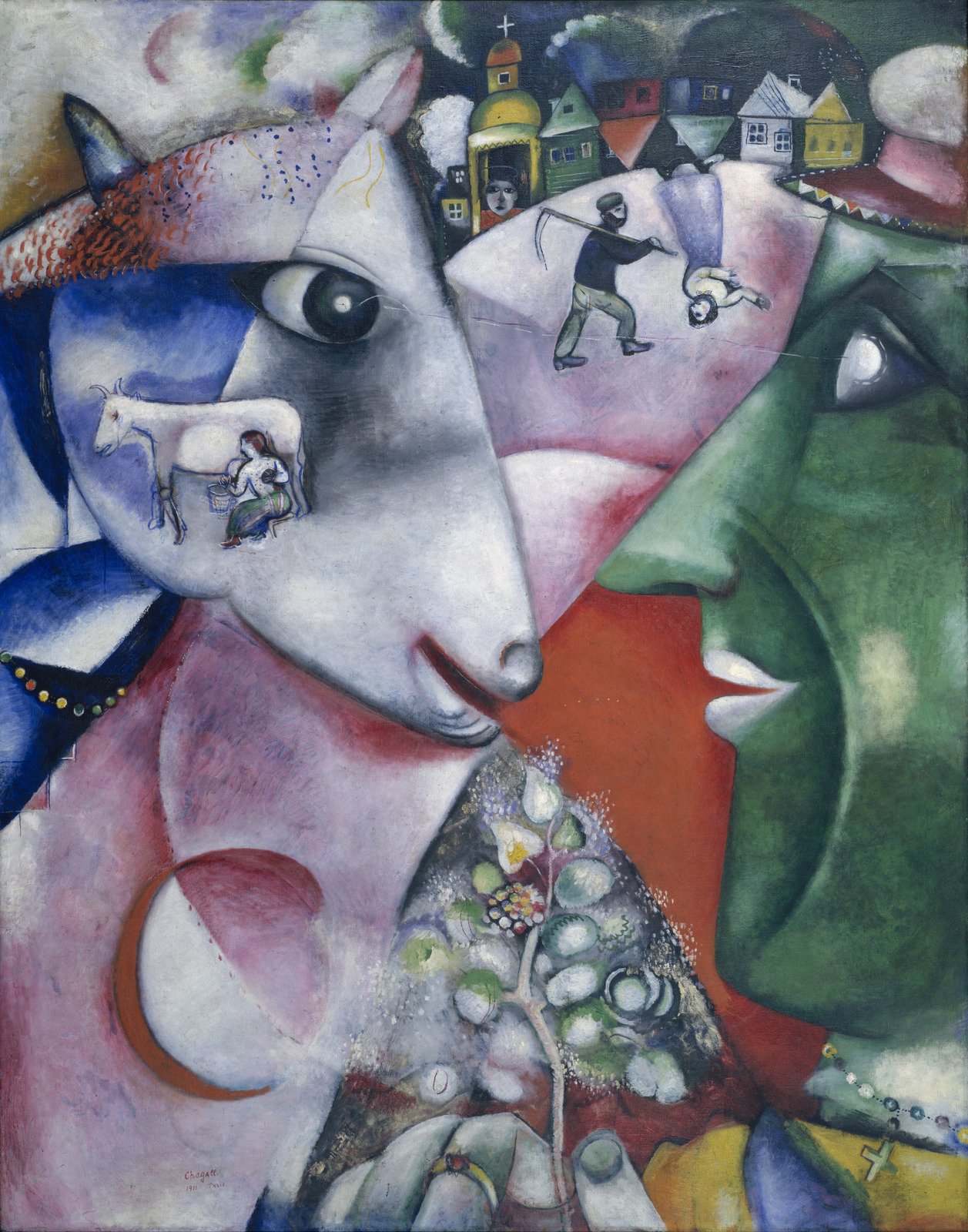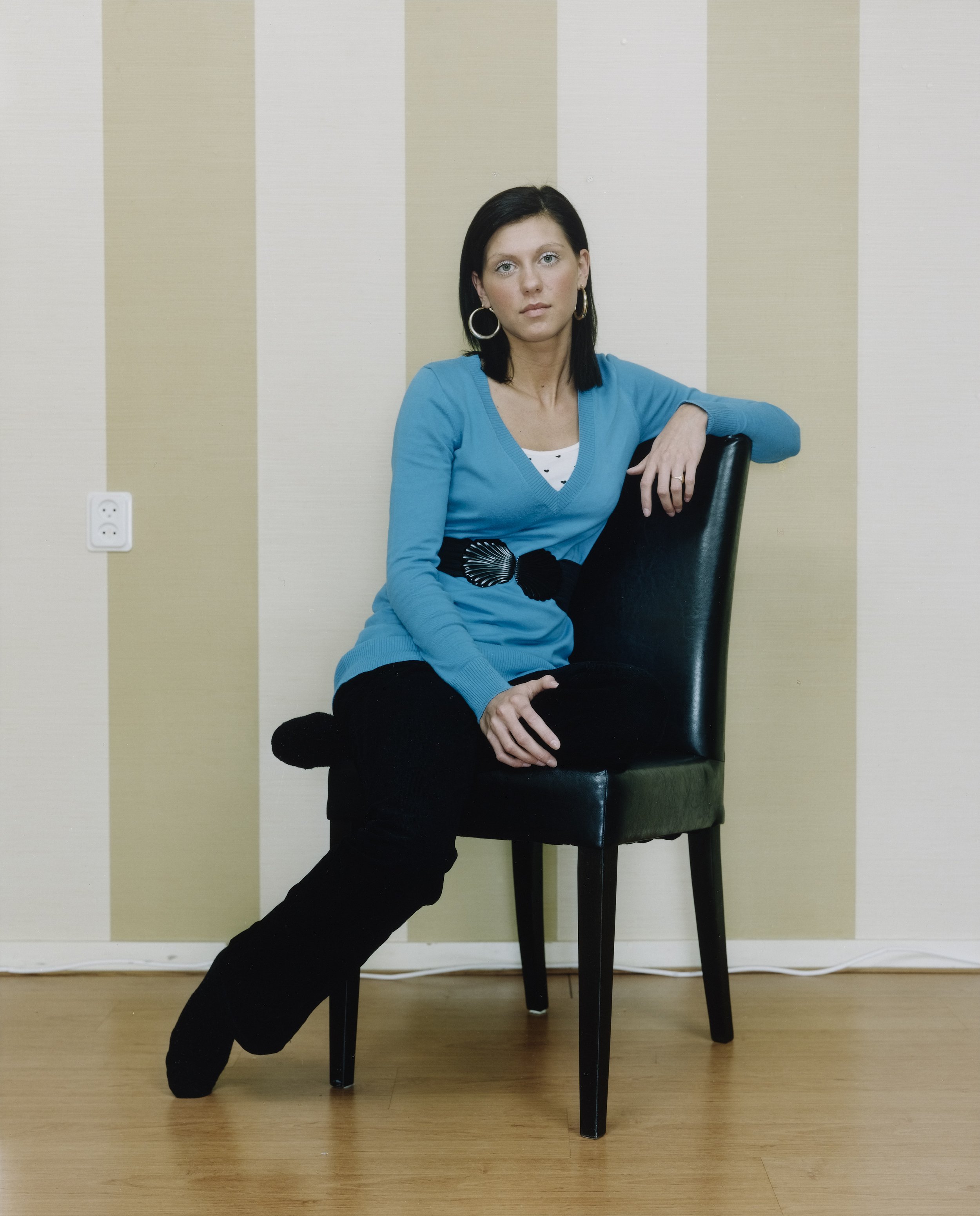Part 1 - Overview
1.1. Introduction to Art & Identity
See how artists create works of art to express, explore, and question identity.
Learning Objectives
Discover how artists create works of art to express, explore, and question identity.
Analyze how artists critique cultural constructs of identity through explorations of media, advertising, consumer culture, and history.
Create or find an image or artwork that explores an aspect of your identity.
Identity is the way we perceive and express ourselves. Factors and conditions that an individual is born with—such as ethnic heritage, sex, or one’s body—often play a role in defining one’s identity. However, many aspects of a person’s identity change throughout their life. People’s experiences can alter how they see themselves or are perceived by others. Conversely, their identities also influence the decisions they make: Individuals choose their friends, adopt certain fashions, and align themselves with political beliefs based on their identities.
1.2. Art & Identity
The introductory video to this topic is on the Museum of Modern Art’s YouTube Channel…
Part 3 - Read and Review
3.3. Art & Identity Visual & Written Response
Think about various aspects of your own identity. Create or find an image that represents one of more of these aspects. Post this image here. Explain what the image is, why you selected it, and what it tells us about you. Then, respond to another learner’s post that resonates with or interests you.
Aspects of my Own Identity...
In thinking about aspects of my own identity, I decided to draw inspiration from artist Glenn Ligon's project wherein he asked his friends to imagine he was missing and to provide descriptions that would help people find him. To this end, I asked a few dozen friends (and received responses from ten of them) the following questions: (1) What are three aspects of my IDENTITY that come to mind when you think of me? (2) What is the one aspect of my PERSONALITY that comes to mind for you, before anything else? and (3) How would you describe me if I went missing and you had to create my missing poster?
In terms of questions one and two, I found the answers grouped into three pools as follows: (1) people described me using words such as: kind, friendly (x2), compassionate (x2), considerate, gregarious, hospitable, honest, very giving, helpful and caring, warmhearted, and sociable; (2) funny (x7), and cheeky; as well as (3) artistic (x3), creative, and talented. For question three, there was an interesting variety of responses where two people simply said they'd use a photo of me and one referenced my humour, stating how they'd "...go to your Facebook profile and give them (your) profile picture of Burt Reynolds - a picture says a thousand words." Others used more concrete language to describe my physical appearance, using words such as: "nearly 6ft, blond, larger man (not "meaty");" "tall, dark hair, blue eyes, good looking guy;" "heavy set man with reddish hair that is thinning (with) a beard, also wears glasses;" and "robust, loud and plump, waddles." One friend was particularly kind, saying: "First of all, I pray that you never go missing bitch, you matter. But if I have to talk about when you are not around, I will say I miss the person, I wish he was gay. For your missing poster, I gonna say: 'Wanted, that guy who could easily steal my heart but he ignored me all the time, but still I can't imagine my boring life without him. So, if you see this person wishing Merry Christmas to strangers in the summer, please let me know. I need his stupidness to balance my life."
Photo Response
I shot this image, a "selfie" of sorts, on January 1, 2020. In it, I am wrapping up and putting away decorations that had adorned the Christmas tree at my Mother's house. I shot about a dozen different angles as best I could, without looking at the results of each shot at the time. In downloading and looking at the shots today, I ultimately chose this one, where I'm slightly blurred due to the camera focusing on the table and some of the Christmas decorations that are in the foreground, giving the overall composition a shallow depth of field. My intention was to capture the care and attention to detail I put into cautiously packing away my Mother's delicate decorations. I like how I'm blurred because I don't particularly care for taking selfies, and the focus on the decorations helps highlight the importance they have for me in that specific moment. The photo doesn't really pull any of the threads related to my sense of humour but could tease at my creative interests and the kindness I try to show my Mom by helping her with a variety of things. I did not edit, filter, augment or otherwise enhance the photo, nor have I shared it to social media.
After you’ve gone through this process, describe how would you introduce this theme to your students. What question could you ask or what activity could you develop to give them an entry point into the theme?
On introducing the theme of Art & Identity I’d ask students to individually brainstorm how others might answer the following questions when thinking about them: (1) What are three aspects of my IDENTITY that come to mind when you think of me? (2) What is the one aspect of my PERSONALITY that comes to mind for you, before anything else? and (3) How would you describe me if I went missing and you had to create my missing poster? I’d then have the students discuss in groups how they perceive one another by answering the same questions. I’d then have students shoot selfies of themselves, and using the answers they gathered from their own brainstorming and sharing, make an image that places the descriptors onto their selfies in creative ways. Students would then share their images and discuss how they perceived themselves were similar to or different from what their friends had to say.
3.5. Weekly Reflection
Reflect on what you learned this week. What did you learn that was new or surprising?
Art that focuses on identity can either be an exploration of one’s own identity (as done in self portraits by such artists as Frida Kahlo, Francesca Woodman as well as Cindy Sherman or in the exploration of self as seen in On Kawara); or an exploration of the identity of other individuals (as seen by the portrayals of Marilyn Monroe).
These explorations can be deeply resonant, made with careful thought or they can be made on a whim with an eye towards say, some kind of snapshot aesthetic.
Furthermore, these explorations can focus on the human figure, or they can focus on objects that reflect on some aspect of an individual’s identity (as seen in the portrayals of Van Gogh’s and Matisse’s art studios), or they can focus on objects that inform some kind of collective identity (as seen by the work of Ellen Gallagher).
Did any of the artworks resonate with you?
Both Frida Kahlo’s and Andy Warhol’s work resonated with me as both are representations of a kind of rebirth or renewal. Kahlo’s self portrait illustrated her break with her past as she pushed towards standing on her own as an independent artist; and Warhol’s portrait tackled how Monroe was being reborn after death in terms of how she was remembered and represented in society through the pop culture lens of that time.
Did your perspective on any of the artworks change by looking at them through this week’s theme?
I was familiar with many of these works but wasn’t familiar with work by artists such as Mona Hatoum and On Kawara, who used objects such as postcards to form the basis of his own portrayal of himself. I’ve had an understanding that objects can represent aspects of identity, as you can do this often through visual imagery in creative writing - but I’d forgotten how this can so easily transfer over to the creation of art. With my own creative writing I’ve learned how vivid and rich descriptions about an individual’s bedroom can bring to light fascinating insights into who that individual is. And even though I wasn’t fully conscious of it I know I’ve done this with my own artwork, in a series of joiner photographs that explore my own life and the objects in my own rooms as well as how I am placed throughout those spaces (this series I’ve called “a simple slight of essence”). But both Hatoum and Kawara did this and for me that made their work stand out and resonate for me as being a way of moving beyond pure portraiture.
Review…
Identity is about who we are; a topic that is relevant to students; and about how we see ourselves in the world.
In Untitled (Runaways), Glenn Ligon demonstrated that identity can be influenced by other people’s perceptions of you; and that it can be influenced by the past.
In Self-Portrait with Cropped Hair, Frida Khalo used the following elements to convey her separation from her husband, artist Diego Rivera:
Lyrics from a Mexican folk song;
Cropped hair; and
The wearing of a dark, oversized suit resembling the ones that Rivera wore.
Examples of sub-themes which explore the theme of identity include how artists represent aspects of the self; as well as individual vs group identity.
Andy Warhol based Gold Marilyn Monroe on a publicity photograph to highlight the difference between how the public sees celebrities and who they really are.
I and the Village is based on Marc Chagall‘s memories of growing up in a Hasidic Jewish village in Belarus.
Some benefits of teaching with the theme of identity include: engaging in meaningful conversations with students; allowing students to make personal connections to artworks; and allowing students to consider other people’s perspectives.
John Dewey believed that museums are an important part of society and that they: should be an integral part of education; should be connected with everyday life activities; and provide a space where curiosity and imagination are encouraged.
John Dewey argued that learning should be a part of a student’s lives both in and out of the classroom.
A primary element Henri Matisse uses in The Red Studio to represent his identity is depictions of his own works of art.
The chairs in which Almerisa sits may be seen as a metaphor for Almerisa’s transformation from an immigrant child to an adult Dutch citizen in Rineke Dijkstra’s portrait series.
Free, White and 21 refers to a character in Howardena Pindell’s video who represents the racism the artist experienced coming of age as a black woman in America.
Ellen Gallagher uses vintage advertisements aimed at black audiences in Deluxe in order to critique their messages about identity and self-improvement including how:
You can have a better career by enrolling in nursing school;
Skin lightening cream leads to improved complexion; and
Wigs can effectively recast your appearance.
The title of Kara Walker’s 40 Acres of Mules refers to the undelivered promise given to emancipated slaves.
In Bruce Nauman’s Art Make-up, he dips his fingers into a small dish of makeup and smears his face and body with the thick pigment until he is covered, beginning with white makeup, he moves on to pink, green, and black, layering each new color on top of the previous ones.
On Kawara’s series, I Got Up… shares the following consistently:
Each postcard is stamped;
He used tourist postcards; and
He would send these postcards to various friends, family members, collectors, and colleagues.
Glenn Ligon. Untitled, from Runaways. 1993. One from a portfolio of 10 lithographs, composition (irreg.): 12 9/16 x 8 15/16" (31.9 x 22.7 cm); sheet: 16 x 12" (40.7 x 30.5 cm).
Frida Kahlo. Self-Portrait with Cropped Hair. 1940. Oil on canvas, 15 3/4 x 11" (40 x 27.9 cm).
Andy Warhol. Gold Marilyn. 1962. Silkscreen ink on synthetic polymer paint on canvas, 6' 11 1/4" x 57" (211.4 x 144.7 cm).
Marc Chagall. I and the Village. 1911. Oil on canvas, 6' 3 5/8" x 59 5/8" (192.1 x 151.4 cm).
Henri Matisse. The Red Studio. 1911. Oil on canvas, 71 1/4" x 7' 2 1/4" (181 x 219.1 cm).
Rineke Dijkstra. Almerisa series. 1994–2008. Chromogenic color print, 13 3/4 x 11" (35 x 28 cm).
Howardena Pindell. Free, White and 21. 1980. Video (color, sound), 12:15 min.
Ellen Gallagher. DeLuxe. 2004–05. Portfolio of 60 photogravure, etching, aquatint, and drypoints with lithography, screenprint, embossing, tattoo-machine engraving, laser cutting, and chine collé; and additions of plasticine, paper collage, enamel, varnish, gouache, pencil, oil, polymer, watercolor, pomade, velvet, glitter, crystals, foil paper, gold leaf, toy eyeballs, and imitation ice cubes, overall: 84 x 167" (213.4 x 424.2 cm); each: 13 x 10 1/2" (33 x 26.7 cm).
Kara Walker. 40 Acres of Mules. 2015. Charcoal on three sheets of paper. (.a): 104 × 72" (264.2 × 182.9 cm); (.b): 103 × 72" (261.6 × 182.9 cm); (.c): 105 × 72" (266.7 × 182.9 cm).
Bruce Nauman. Art Make-Up: no. 1 White, No. 2 Pink, No. 3 Green, No. 4 Black. 1967–68. 16mm film transferred to video (color, sound), 40 min.
On Kawara. I Got Up…. 1977. Ink and stamps on postcards, each postcard 4 x 5 7/8" (10.2 x 15 cm), each frame 53 3/4 x 11 1/4 x 1 3/4" (136.5 x 28.6 x 4.4 cm).
